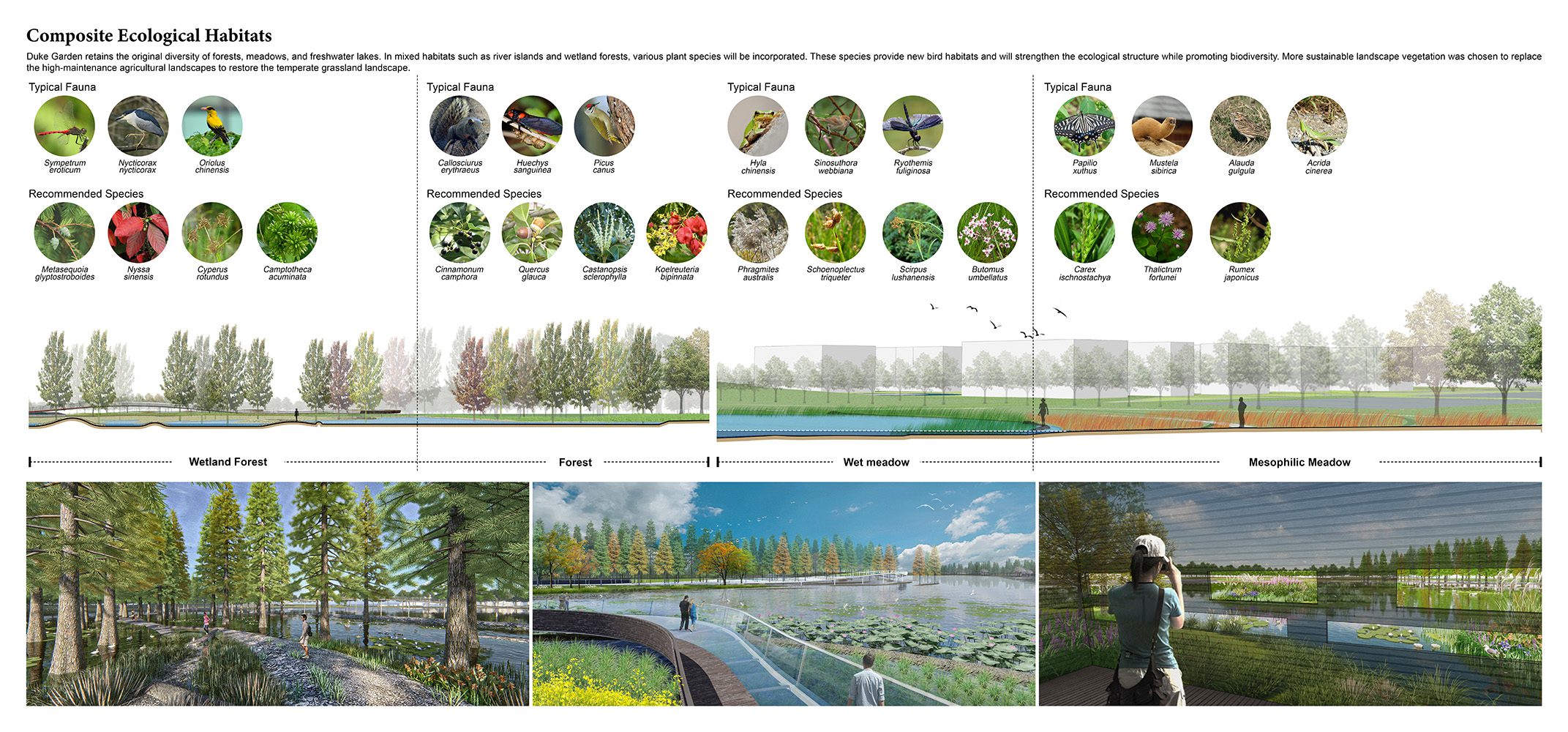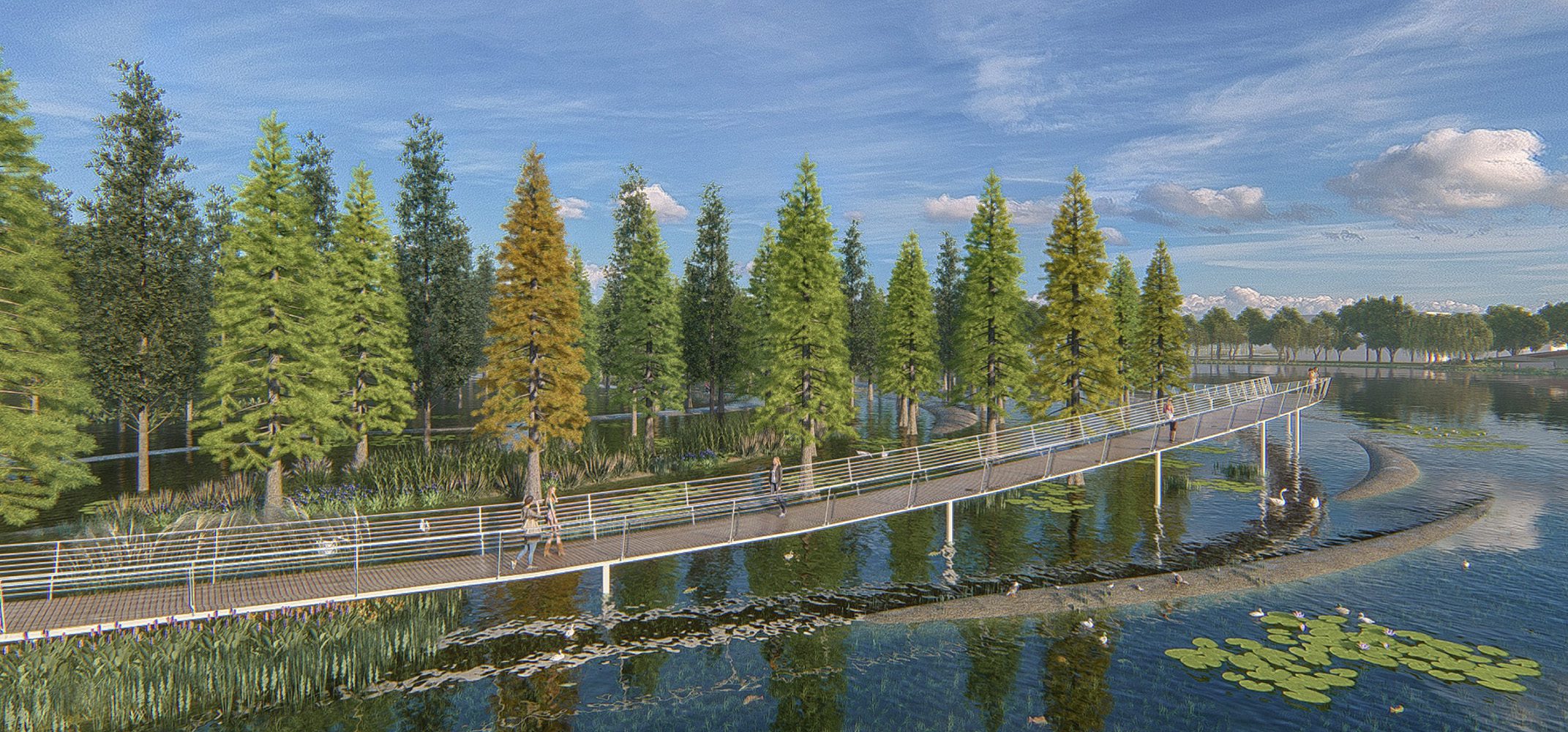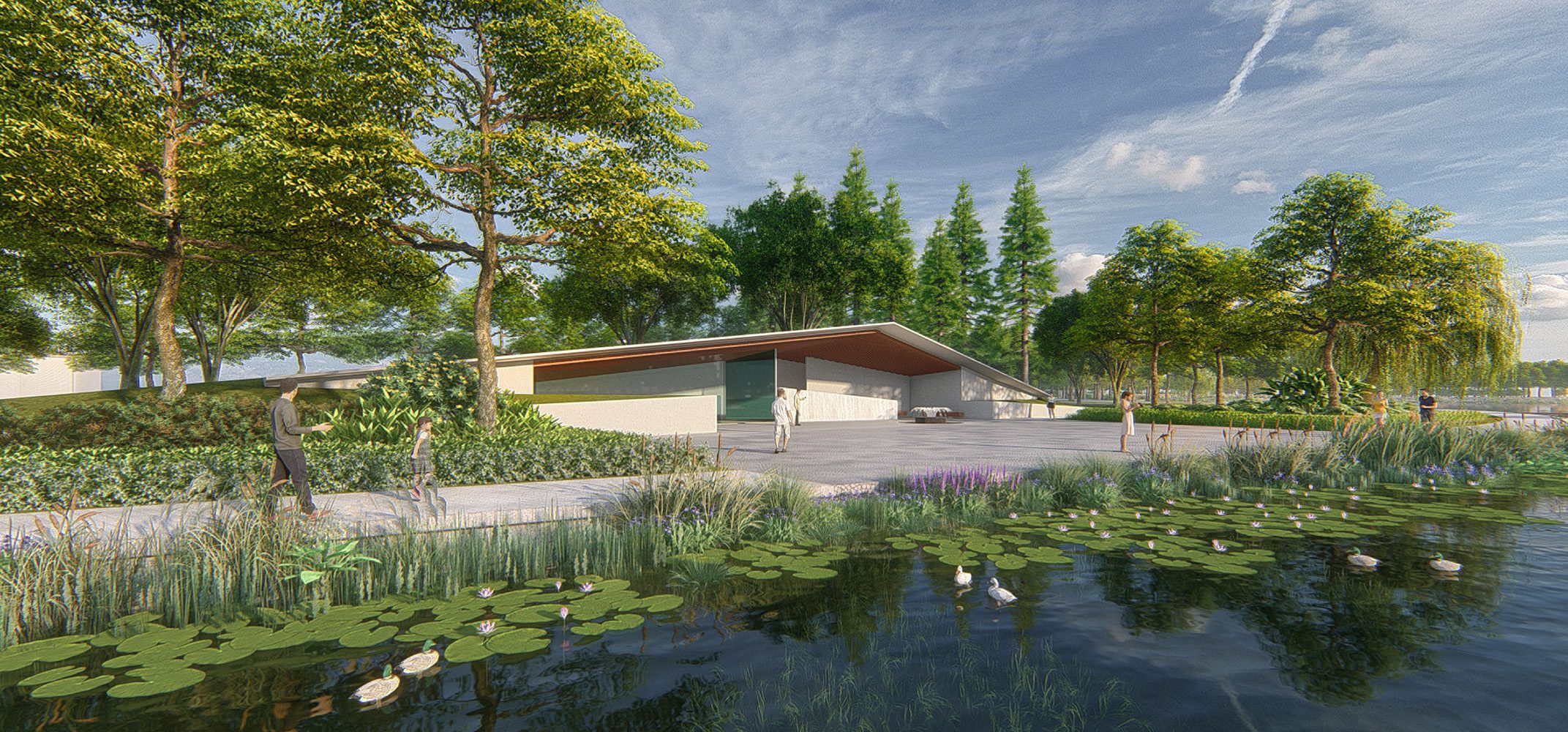Harmonious Symphony of Water: The Eloquent Aquatic Tapestry of Kunshan Duke Garden’s Landscape Design
Futurepolis Urban Planning & Architecture Design Inc.


Short description
Project Description
Duke Garden, located northeast of Duke Kunshan University, spans approximately 28.9 hectares. It is a key node within the Miaojingwei area of the Sponge City pilot project, as well as an integral part of the local wetland system. It also serves as an important stopover for migratory birds. Unfortunately, excessive land reclamation has resulted in a monotonous environmental structure with diminished water quality and biodiversity. The landscape design team has embarked on an ecological restoration project to introduce composite and diverse habitats to restore biodiversity. Simultaneously, they are enhancing functions to improve water storage and purification.
After conducting in-depth research on the ecological landscape surrounding Kunshan, the design team proposed a low-intervention environmental restoration strategy centered on reconstructing a diverse array of habitat types. This approach will transform the monotonous suburban farmland into a rich mosaic of habitats by seamlessly introducing forests, wetlands, grasslands, and aquatic environments. This strategy not only strengthens the ecological structure, but also enhances ecological connectivity.
Kunshan Duke Garden's landscape design significantly reduces environmental impacts. It also serves as an educational hub for Duke University while linking adjacent commercial and residential areas into a cohesive green community space.
Site Conditions & Challenges
The site of Kunshan Duke Garden is a typical suburban landscape consisting of farmland and a few nurseries. In the north, a man-made Baiyao Lake of approximately 9.5 hectares in size, was created through excavation. A canalized river, about 25 meters wide, lies to the east. Both bodies of water feature regular geometric shapes. Due to prolonged earth excavation, the deepest point reaches 11 meters and penetrates two groundwater layers. However, the water quality is only level IV to V. Signs of oil pollution are evident in both soil and water, and the soil shows clear traces of garbage landfill which led to a homogenous range of species and habitat types. The primary challenges, and scope of the project, is to restore damaged ecological characteristics, rejuvenate ecological vitality, improve water quality, increase biodiversity, and integrate active spaces to imbue the site with a new, distinct spirit.
Design Strategy
The design anchors on water as the foundational element. Utilizing parametric analysis to simulate the characteristics of plains formed by natural water forces, the design team can extend the ecological interlace to enhance the Baiyao Lake shoreline. It will also reduce the slope of ecological embankments to increase the surface area of transition zones. Microorganisms, such as spirulina, will be added to purify water runoff while simultaneously augmenting the water's storage and regulation capacity. This complex landscape system improves the site's ecological environment, provides educational and research facilities for Duke University, and injects ecological vitality into the community.
Spatial Nodes Design
1.Composite Ecological Habitats
Duke Garden retains the original diversity of forests, meadows, and freshwater lakes. In mixed habitats such as river islands and wetland forests, a variety of plant species including Metasequoia glyptostroboides, Camptotheca acuminata, and Cyperus rotundus will be incorporated. These species provide new habitats for birds like Nycticorax nycticorax, Oriolus chinensis, and Alcedo atthis, and will strengthen the ecological structure while promoting biodiversity. To restore the temperate grassland landscape, more sustainable landscape vegetation was chosen to replace the high-maintenance agricultural landscapes.
2.Microbial Water Purification
The design integrates a series of water treatment processes into the urban pastoral site including water collection areas, preliminary treatment pools, aeration tanks, plant purification areas, wetlands, and a central water body purification flow line. This system employs both fauna and flora for water purification, and simultaneously cultivates crops such as Oryza sativa, Brassica campestris, Zizania latifolia, and Nelumbo nucifera. The complex, as a whole, creates an agro-ecological system that synergistically combines rice and fish farming with lotus cultivation. This integration of water purification and productive landscape not only enriches the site visually, but also stabilizes the ecosystem through its spatial diversity.
3.Restoration of Topography
The design mimics the characteristics of plains formed by natural water forces by employing more sinuous and gentle designs to the shoreline. This approach extends the length of ecological interlace zones and increases the surface area of transitional habitats. In conjunction with Baiyao Lake and the surrounding water systems, the minimum area of the lake is set at 4.7 hectares. Microorganisms like spirulina are utilized to purify runoff, while also managing the storage of approximately 19,000 cubic meters of rainwater runoff across the entire area. This strategy not only restores natural topographical features, but also enhances the site's ecological function and water management capacity.
4.People, Nature, Education
The Water Sleeve Bridge spans across varied landscapes including vertical flow wetlands, urban pastoral fields, and aquatic forests, each with distinct environmental experiences. This design invites visitors to immerse themselves in nature. Observation birdhouses are strategically placed for closer wildlife encounters and ecological education.
Addressing Social Issues through Design
At its core, Duke Garden's intricate aquatic ecosystem serves as a pioneering example for Sponge City initiatives. The design strategically substitutes high-maintenance agricultural landscapes with three types of ecological interlace zones and transitional habitats: Wetland Forest, Wet Meadow & Mesophilic Meadow, and Riverbanks. This transformation not only revives the temperate grasslands, but also maintains existing farmlands to support local economic sustainability.
Duke Garden's water-based ecological purification approach marks a shift from traditional landscaping. It uses bioremediation and diverse landscapes to upgrade water quality from class IV-V to superior levels. This strategy reduces project costs and lessens the strain on nearby pipelines and rivers.
Duke Garden is a haven for birds, amphibians, and small mammals, as well as a center for ecological education and community.
It features various paths for cultural, meditative, and cycling activities. The Ecological Cultural Garden is a public space for leisure, culture, and learning.
This design approach meets diverse social needs by establishing a model for sustainable, community-focused landscape architecture.
Entry details


















